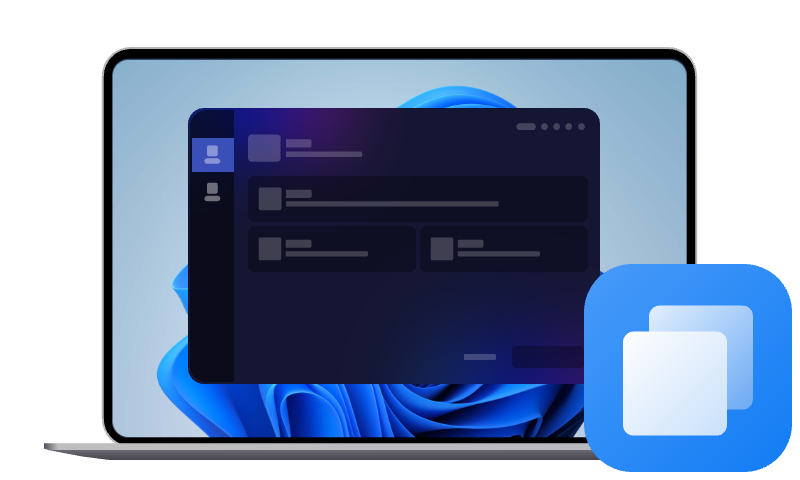How to Change Boot Drive in Windows 11 with Command Prompt
On this page, you will learn how to change boot drive in Windows 11 with Command Prompt, and a simple solution to move boot drive to a different drive.
Can You Use Command Prompt to Change Boot Drive?
If you're trying to upgrade your PC, clone your system to a new SSD, or reorganize your drives, you may wonder if it is possible to change the boot drive in Windows 11 using Command Prompt. The short answer is - Yes, but with limitations.
Command Prompt is a powerful tool in Windows 11 that can manipulate boot settings using specific commands like bcdedit, bootrec, and diskpart. However, it's crucial to understand that Command Prompt doesn't allow you to physically reassign boot priority in BIOS or UEFI. What it does allow is manipulating the Boot Configuration Data (BCD) store - the database that controls how the OS boots. Specifically, using CMD, you can:
- Set a different Windows installation as the default.
- Add or delete entries from the BCD.
- Repair boot files if they become corrupted.
To be clear, if you're looking to physically clone your OS or move your data to a different disk entirely (like switching from HDD to SSD), Command Prompt won't handle the whole job. But for those of you who want to reconfigure the boot partition or make a cloned drive bootable, please read on.
How to Change Boot Drive in Windows 11 with Command Prompt
Changing your boot drive via Command Prompt involves working with the BCDEdit tool and the Diskpart utility. It's especially useful when setting up a cloned drive or troubleshooting boot errors. Here's how to change boot drive in Windows 11 step by step.
- Note: Incorrect commands can make your system unbootable, so it is advised to operate with extra caution and copy your boot drive or the operating system to another drive to avoid unexpected situations.
Step 1. Open Command Prompt with Administrator Privileges
- Press Windows + S, type cmd, and choose Run as administrator.
Step 2. Launch Diskpart Utility
- Type diskpart and press Enter. Then, type list disk with Enter to display available drives.
Step 3. Select the Drive You Want as Boot Drive
- Type select disk X with Enter (replace X with the disk number of your target drive).
- And type list partition with Enter to list its partitions.
Step 4. Assign Active Partition
- Select the system partition by typing select partition Y (replace Y with the partition number).
- Now, mark it as active: active.
- After that, type exit to close Diskpart.
Step 5. Use BCDEdit to Configure Boot Entry
- Now enter: bcdboot C:\Windows /s Y, and press Enter.
- Note: Replace C:\Windows with the Windows folder path and Y: with your system partition on the new drive.
After the command completes successfully, you can reboot the system to check if your boot settings are updated.
What You Cannot Do in Command Prompt?
While Command Prompt is a powerful tool, it's not all-powerful, especially when it comes to hardware-level configurations. Here are a few limitations when attempting to change boot disk in Windows 11using Command Prompt:
❌ Cannot change BIOS boot order: You’ll still need to manually adjust this through BIOS or UEFI firmware settings.
❌ Cannot select the physical drive: It only modifies Windows boot manager, not hardware priority.
❌ Cannot detect hardware issues: If your new drive isn't detected in BIOS, CMD won't help.
❌ No recovery automation: CMD won't help if your boot drive is completely dead or corrupted.
❌ Cannot physically clone a disk: CMD can't move your OS and files to a new drive, you need third-party software, like AOMEI Cloner, for this.
Best Way to Clone Boot Drive to SSD in Windows 11
Want a reliable and foolproof way to migrate or replace your boot drive in Windows 11 with a new SSD or HDD? AOMEI Cloner is an excellent option for Windows users. Its Disk Clone allows you to copy everything from one drive to another, including OS, settings, files, and other data, ensuring a secure boot of the new drive. This tool provides an intuitive interface to fit all users, and it comes with other useful features:

- System Clone/Partition Clone - It is capable of copying only the Windows OS and a specific partition to new drive as well.
- Edit Partitions - It allows you to resize the partition size on the destination disk to prevent unallocated space left after cloning.
- Intelligent Clone - It clones only used sectors on the hard drive, making it possible to clone larger HDD to smaller SSD or clone hard drive with bad sectors, and boot from it successfully.
- SSD Alignment - It can automatically align SSD using 4K technology while cloning hard drive to SSD, to boost its read/write speeds and lifespan.
Here is how to change boot drive to SSD on Windows 11 by cloning using AOMEI Cloner.
Step 1. Connect the new SSD with a SATA-to-USB adapter or directly plug it into your motherboard.
Step 2. Launch AOMEI Cloner, choose Clone, and then Disk Clone.
Step 3. Select your source disk (current boot drive), and choose the destination disk (new SSD).
Step 4. Check the SSD Alignment box for better performance and lifespan. Click Start Clone to migrate from HDD to SSD without reinstalling.
- DO NOT check the Sector By Sector Clone option, as it will take considerably longer to clone every part on the source drive, and the bad sectors will also be copied.
How to Change Boot Order on Windows
Even after cloning, your system won't boot from the new drive unless it’s prioritized in the BIOS. Here's how to do that.
Step 1. Restart your PC and enter BIOS by pressing keys: F2, DEL, ESC, or F10, depending on your motherboard.
Step 2. Use arrow keys to navigate to the Boot tab, then highlight the cloned drive and move it to the top of the list.
Step 3. Save changes (typically F10) and reboot.
FAQs on Changing Boot Drive in Windows 11
#1. Is Windows 11 compatible with CSM or UEFI?
Windows 11 requires UEFI and Secure Boot to be enabled. CSM (Compatibility Support Module) is not supported officially. If your system is still running in legacy mode, you may need to convert your disk from MBR to GPT before installing or migrating Windows 11.
#2. Can I move Windows 11 from HDD to SSD?
Absolutely, you can move Windows 11 from HDD to SSD. With AOMEI Cloner, you can run its System Clone to move Windows 11 from your hard drive (HDD) to a solid-state drive (SSD) without reinstalling anything.
#3. Why is my M.2 SSD not showing up in BIOS?
There are several reasons for M.2 SSD not showing up:
- Motherboard incompatibility: Not all M.2 slots support NVMe booting.
- Disabled M.2 port: Some boards require enabling via BIOS.
- Improper installation: Double-check the slot and screw.
- Drive failure: It’s rare, but your SSD could be faulty.
- PCIe lane sharing: Some M.2 ports share lanes with SATA ports, so disabling one can block the other.
Conclusion
That's all about how to change boot drive in Windows 11 with Command Prompt. While Command Prompt offers a way to tweak the boot configuration with commands like bcdedit, it doesn't replace the need to manually change boot order in BIOS. And it certainly doesn't help clone your OS or migrate your files - which is why tools like AOMEI Cloner are essential for system upgrades.
For most users, especially when switching to a new SSD, this visual and guided cloning solution makes the process smoother, safer, and faster. It widely works with Samsung SSDs, Crucial SSDs, WD SSDs, and so on.

